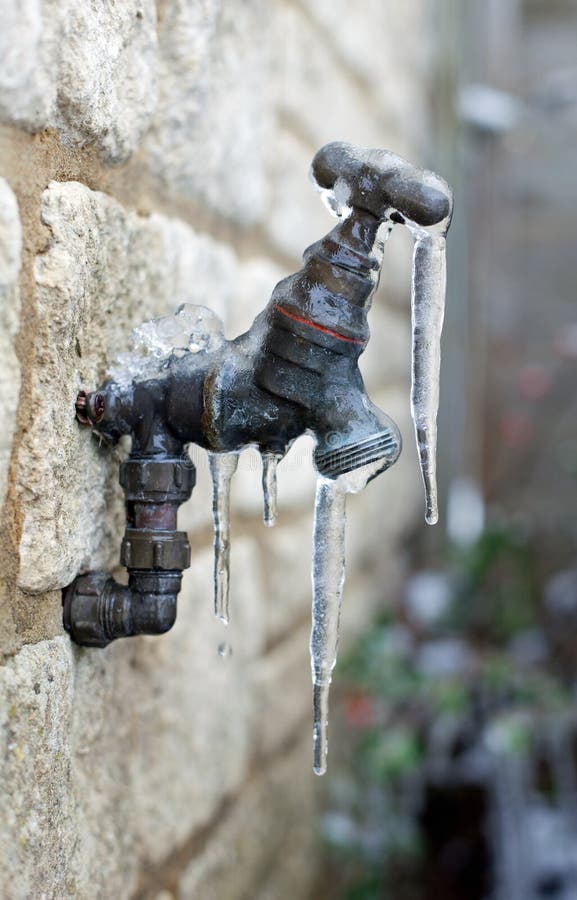Essential Tips to Protect Against Frozen Plumbing in Cold Weather
Essential Tips to Protect Against Frozen Plumbing in Cold Weather
Blog Article
Right here in the next paragraphs you can discover some high-quality points related to How to Prevent Your Pipes From Freezing.

Cold weather can ruin your plumbing, particularly by freezing pipelines. Right here's just how to stop it from happening and what to do if it does.
Introduction
As temperature levels drop, the risk of icy pipes increases, possibly bring about costly repairs and water damage. Comprehending just how to stop frozen pipes is critical for home owners in cold climates.
Recognizing Icy Pipes
What creates pipes to ice up?
Pipelines ice up when revealed to temperature levels listed below 32 ° F (0 ° C) for extended periods. As water inside the pipes ices up, it broadens, taxing the pipeline wall surfaces and possibly causing them to rupture.
Dangers and problems
Icy pipes can bring about water system disruptions, property damage, and costly repair work. Ruptured pipes can flooding homes and create considerable architectural damages.
Signs of Frozen Pipes
Identifying frozen pipes early can prevent them from bursting.
Just how to identify frozen pipelines
Look for decreased water circulation from taps, uncommon odors or sounds from pipes, and visible frost on subjected pipelines.
Avoidance Tips
Shielding prone pipelines
Wrap pipelines in insulation sleeves or use warmth tape to safeguard them from freezing temperature levels. Focus on pipelines in unheated or exterior areas of the home.
Home heating techniques
Keep interior spaces appropriately heated up, especially locations with plumbing. Open closet doors to permit cozy air to flow around pipes under sinks.
Securing Exterior Pipes
Yard pipes and outdoor taps
Disconnect and drain pipes yard tubes before winter season. Set up frost-proof faucets or cover exterior faucets with insulated caps.
What to Do If Your Pipes Freeze
Immediate actions to take
If you presume frozen pipelines, maintain faucets open up to soothe pressure as the ice melts. Use a hairdryer or towels taken in warm water to thaw pipes gradually.
Long-Term Solutions
Structural changes
Consider rerouting pipes far from exterior wall surfaces or unheated locations. Add additional insulation to attics, basements, and crawl spaces.
Upgrading insulation
Buy premium insulation for pipelines, attic rooms, and walls. Correct insulation aids maintain regular temperature levels and reduces the danger of frozen pipes.
Final thought
Stopping frozen pipelines requires positive measures and fast feedbacks. By understanding the causes, indications, and safety nets, homeowners can secure their plumbing throughout winter.
5 Ways to Prevent Frozen Pipes
Drain Outdoor Faucets and Disconnect Hoses
First, close the shut-off valve that controls the flow of water in the pipe to your outdoor faucet. Then, head outside to disconnect and drain your hose and open the outdoor faucet to allow the water to completely drain out of the line. Turn off the faucet when done. Finally, head back to the shut-off valve and drain the remaining water inside the pipe into a bucket or container. Additionally, if you have a home irrigation system, you should consider hiring an expert to clear the system of water each year.
Insulate Pipes
One of the best and most cost-effective methods for preventing frozen water pipes is to wrap your pipes with insulation. This is especially important for areas in your home that aren’t exposed to heat, such as an attic. We suggest using foam sleeves, which can typically be found at your local hardware store.
Keep Heat Running at 65
Your pipes are located inside your walls, and the temperature there is much colder than the rest of the house. To prevent your pipes from freezing, The Insurance Information Institute suggests that you keep your home heated to at least 65 degrees, even when traveling. You may want to invest in smart devices that can keep an eye on the temperature in your home while you’re away.
Leave Water Dripping
Moving water — even a small trickle — can prevent ice from forming inside your pipes. When freezing temps are imminent, start a drip of water from all faucets that serve exposed pipes. Leaving a few faucets running will also help relieve pressure inside the pipes and help prevent a rupture if the water inside freezes.
Open Cupboard Doors
Warm your kitchen and bathroom pipes by opening cupboards and vanities. You should also leave your interior doors ajar to help warm air circulate evenly throughout your home.

Do you really like reading up on How to Prevent Your Pipes From Freezing? Place feedback below. We'd be happy to listen to your opinion about this page. We hope to see you back again before long. Enjoyed our article? Please quickly share it. Help someone else discover it. I value reading our article about How to Prevent Your Pipes From Freezing.
Click Here Report this page